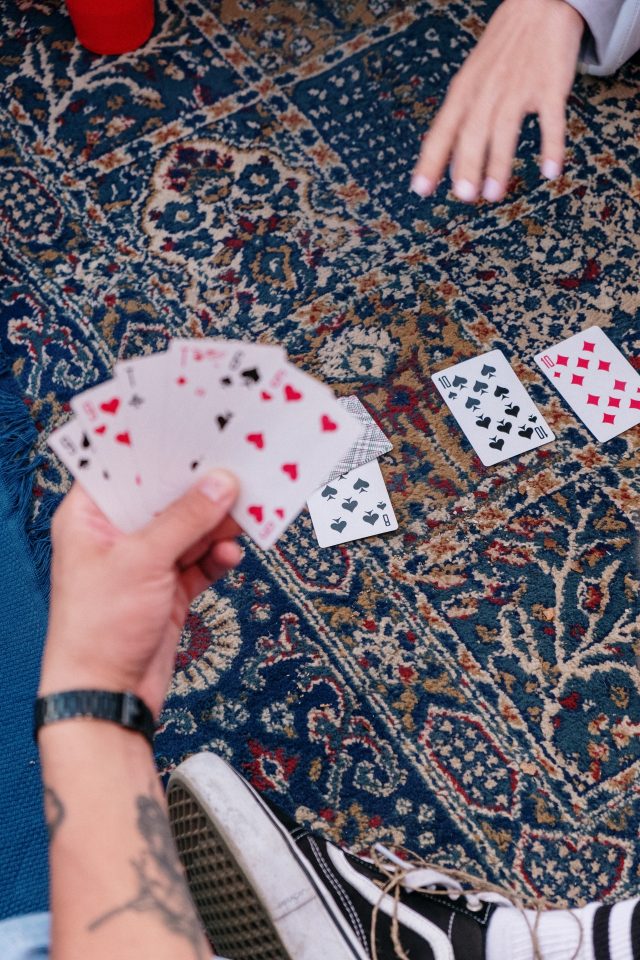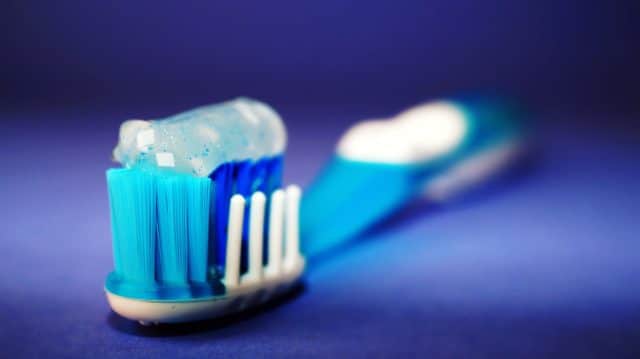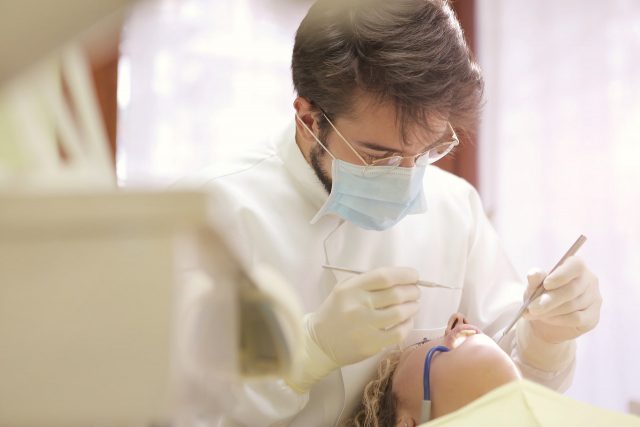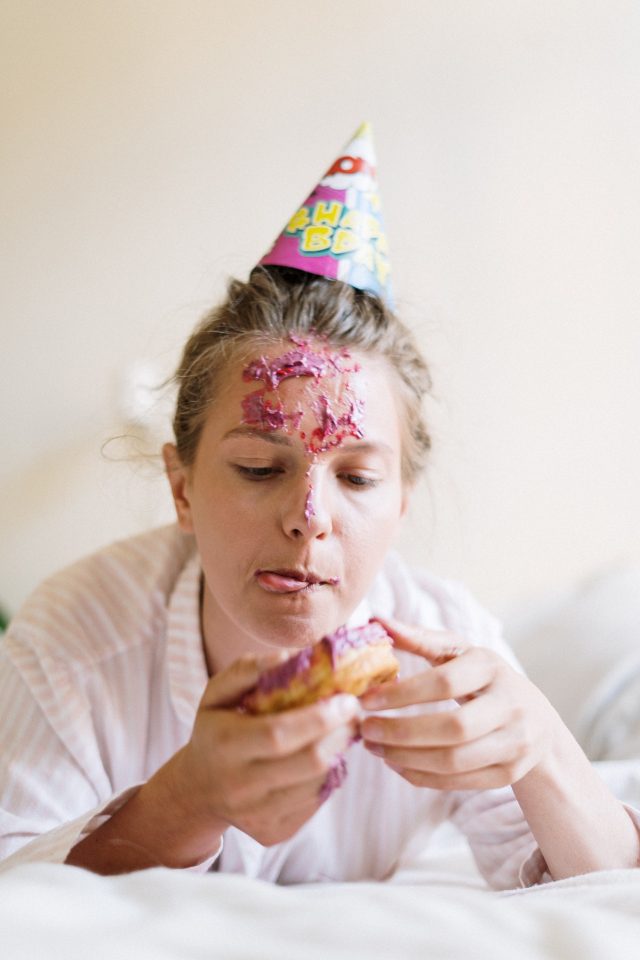Addiction is sometimes referred to as a "family disease," and rightfully so. It affects the patient and his or her entire family's physical health, finances, and psychological well-being. At the same time, the family also has the power to make or break their loved one's recovery efforts as he or she goes through the journey to sobriety. That's why the importance of family therapy can never be overstated.
Family therapy is designed to address specific issues that affect the psychological health of the family, like substance abuse. It helps families work through challenges, struggles, and tough times in a manner that doesn't just address the problem but leaves the family stronger.
Addiction takes a toll on everyone. It forces family members to pick up the slack of the addict, make excuses for his/her behavior, and potentially endure physical, sexual, and emotional abuse. Extended family members and friends may also have to chip in financially (or in other ways) to cushion the ignored responsibilities. Unfortunately, this naturally leads to instability and conflict within any given family, irrespective of how close-knit it used to be. In the long run, family members end up feeling disappointed and even frustrated with the behavior.

While the abuse might not always be physical, psychological and emotional abuse can stick with a person for a lifetime, if help is not sought.
Therapy is a means to help cope with alcohol or drug addiction – and that's not the same as making the problem disappear. Accepting the situation and letting go of things that are beyond control is part of family therapy. When families let go of expectations, they can heal and embrace their present reality while working to a better future. The opposite is also true.
This therapy recognizes that the addiction problem affects the entire family as opposed to just one person. It aims to empower families with skills to help adults and adolescents communicate through conflict and understand any substance abuse or co-occurring disorders like mental health disorder, family conflict and communication, learning disorders, peer networks, work or school issues, and so on. Family involvement is especially critical when the addict is an adolescent because he or she is still under parental care and is subject to the parent's rules, control, and support.
Family therapy is based on the belief that every family member plays a part in the family system, and when one person is affected, the entire family takes the hit. Treating an individual alone is the same as addressing an illness's symptoms without treating the disease itself. And although this approach is often used to help solve a person's problem that's impacting the entire family, it also applies in family-wide issues like conflicts between spouses, siblings, children, or parents. Family therapists can help loved ones to identify ways to manage conflicts, struggles, and challenges.

Given the chance to communicate honestly and openly is a good foundation for true growth and continued development of familial relationships.
Family-based interventions are often provided in conjunction with behavioral interventions and medications. The adult or adolescent substance abuser may attend individual or group therapy sessions with their peers and family therapy.
Family therapy is offered in outpatient, intensive outpatient, and residential rehab programs. According to the National Institute on Drug Abuse post, dubbed "Principles of Adolescent Substance Use Disorder Treatment: A Research-Based Guide," here are some types of family-based approaches.
Family Behavioral Therapy is an evidence-based intervention that uses innovative, easy-to-learn, behavioral therapies to attain goal performance within a family context. It blends behavioral contracting and contingency management to address drug and alcohol abuse and other behavioral problems. FBT addresses vast areas, including family relationships, mental health, sobriety, and effective management of substances, sports performance, self-protection, employment, beautification, and home safety. Under this model, the patient and family member take part in treatment planning and select specific treatments from a list of evidence-based treatment options. FBT also rewards positive behavior during each session. And when behavioral goals are met, the therapist may use contingency management to reinforce the behavior.
MDFT protocols guide counselors in analyzing and intervening simultaneously in adolescents and their family's life. Cognitive processes, emotions, and behavior are linked and are all addressed under this family-based treatment model. Teen problems like substance abuse and delinquency are multidimensional, and therefore require multifaceted therapist behaviors and remedies. As a multisystem model, therapists work separately with the teen, the family and other systems (juvenile justice systems or school), and then together to forge new relationships.
BSFT diagnoses and corrects patterns of family interactions connected to distressing symptoms and experiences in children ages 6-10. It attempts to shift family interactions from habitual to proactive or conflictive to collaborative, to allow the trapped love to thrive. BSFT is a short-term, problem-focused model with an emphasis on adjusting maladaptive interaction patterns. It includes 12-16 sessions that run over three months.

Healthy relationships can be developed over time, with the right amount of commitment and a positive outlook on your future.
The overriding goal of MST is to keep adolescents who display serious clinical issues like violence, drug use, or severe criminal behavior in school, at home, or out of trouble. Through intense contact and involvement with family, this treatment model tries to get to the bottom of the adolescent's behavioral issues. It works to change the patient's ecology to enhance prosocial conduct while minimizing problems and delinquent behavior.
FFT is an empirically grounded family therapy for dysfunctional and at-risk adolescents ages 11-18 and their families. It's a short-term (about 30 hours) program that helps the youth overcome conduct disorders, behavior problems, delinquency, and substance abuse. The counselor works with families to uncover family behaviors that contribute or lead to delinquent behavior. He or she then modifies the communication in the dysfunctional family, and trains members to set clear rules about responsibilities and privileges, negotiate effectively and generalize changes to community relationships and contexts
Family therapy in addiction treatment leverages the family's strength and resources to find ways for the addict to live without drugs or alcohol and to improve the effect of dependency on both the patient and their family. It can help families uncover their own needs and help to keep addiction from moving from generation to generation.
According to the National Survey on Drug Use and Health (NDSUH), 18.2 million people aged 12 and older did not receive specialty treatment despite needing one. The 2017 survey revealed that 1.0 million people perceived they needed substance use treatment, but did not get treatment at a specialty facility. Of this number, about 2 in 5 were not ready to stop using, and 1 in 3 had no medical cover and could not afford the cost. Others did not seek treatment because they did not know where to go for help or had no means to travel to the specialty facility.
Specialty facilities include rehab centers providing outpatient and inpatient services as well as inpatient services at hospitals. But they exclude treatment received in a support group, emergency room, or private doctor’s office. Although specialty facilities can be effective in addressing drug addiction and related problems, their locations and associated costs may be a hurdle for certain individuals who need substance abuse treatment.

Being able to afford quality addiction treatment doesn't have to be a gamble. Options are available for all people across the United States.
Financial limitation is a big barrier to getting effective treatment. Many drug-dependent individuals lack insurance, which covers a large percentage of treatment costs. Without insurance, the out-of-pocket costs can make care unaffordable for many people – even low-cost options like individual or outpatient therapy.
Here are some common reasons why many people remain uninsured:
In 2018, 27.9 million individuals, 65 years or younger, were uninsured in the United States. This number is higher (by 500,000) than what was recorded in 2017. About 5% of the uninsured were Native Hawaiian/Asian, 15% black, 33% Hispanic, and 44% white.
People without insurance coverage have far less access to care than those who are insured. Several studies show that uninsured individuals are less likely to get treatment for drug use and related conditions than the insured counterparts. Most of them would rather avoid seeking treatment because of the amount they would need to pay-out-of-pocket.
The National Comorbidity Survey Replication (NCS-R) of 9,000 participants asked why individuals with dual diagnosis (substance abuse and mental disorders) did not seek professional care. Almost 15% of participants quoted financial limitations such as concerns about cost or lack of insurance. About 17% said they had to stop treatment because of the cost and their insurance not financing further treatment.

Many people cite financial limitations as a primary reason they don't get treatment for their addiction.
The actual price that an individual pays for substance use rehabilitation depends on a range of factors, including:
Rehab facilities costs vary based on the aspects mentioned above. But on average, people bay about $1,500 to 2,500 per month.
Every policy or plan is different, but employer-subsidized insurance, private insurance, and the Affordable Care Act (ACA) cover abuse and mental health treatments. The ACA doesn’t consider substance abuse as a pre-existing condition. So it doesn’t deny treatments. Those who are covered under Medicare or Medicaid can also get funding and treatment options for substance use.

While there are many options to pay for drug rehab, the cost is ultimately worth it. You cannot put a price tag on your health and safety.
Insurance is a great way to fund addiction treatment. But as we’ve discussed earlier, people might not have it for several reasons. The good news is that there are free drug rehabilitation programs that patients can join. Most states offer to fund rehab services that can be accessed by those with little to no income or insurance. These treatment centers often require that the patients meet certain requirements to qualify. For example, one will have to demonstrate a lack of income, addiction status, and need for help. Substance Abuse Mental Health Services Administration (SAMHSA) maintains a Single State Agencies (SSA) for Substance Abuse Services directory that helps individuals determine who to contact for free rehabilitation programs.
The Salvation Army is yet another widely recognized and available addiction resource providing free drug rehabilitation services. It maintains a database of no-fee rehab programs, and those with low or no income or insurance cover can access treatment facilities. Salvation Army has been offering emotional, social, and faith-based help for people struggling with alcohol or drug addiction problems for more than 100 years. Their no-cost programs provide food, housing, community, counseling, and employment as they work to treat symptoms and eventually, the root causes of prolonged substance use.
Some programs offer financing options. Financing is a better option as free rehabs often have waiting lists and limited funding. Some individuals may be somewhat skeptical about taking on a debt, but it’s essential to look at addiction treatment as an investment. In the end, it pays off. When someone attains sobriety, they can go back to their healthy, productive lives. Their loved ones, too, can have peace of mind to focus on other essential aspects of life.
Those that choose to pay for care out of pocket can avoid different hassles and challenges. They have the freedom to pick the rehab facility of choice without third-party influence, and not have to worry about uncovered or unusual expenses as well as hidden fees. Besides, paying cash allows one to negotiate the cost of care, and sometimes, get great deals along the way. LA Times analysis revealed that a majority of treatment facilities offer deep discounts to individuals who pay for care out of pocket. The report pointed out that those who paid in cash could pay $250, while those who used private insurance paid $2,400.

With so many lacking insurance coverage in the United States, it is no wonder the addiction epidemic has skyrocketed out of control. Help is always available. Unfortunately, sometimes you have to make your own luck.
A study published on CNBC indicates that 62% of Americans do not have enough money to pay for emergencies. These families are living paycheck to paycheck, and lack savings to pay for rehabilitation costs. Insurance plans that offer coverage for substance abuse come in handy because they cover about 60-80% of the overall cost. But again, not everyone has insurance coverage. That said, the pricing (or cost) shouldn’t hold patients back. As mentioned earlier, there are free rehab programs, low- and no-cost addiction rehabs, financing among other options to explore.
Yes, you can still receive drug rehab treatment even if you don't have insurance. Many rehabcenters offer sliding scale fees based on income, payment plans, or scholarships to help covercosts. Additionally, state-funded programs provide treatment options for those withoutinsurance, aiming to make rehab accessible to more individuals.It can, however, be difficult tofind placement sometimes.
Yes, alternative payment options for drug rehab include sliding scale fees, payment plans,scholarships, and state-funded programs. Some facilities also offer financing options to helpmanage the costs of treatment for those without insurance.
If you need immediate help for drug addiction but don't have insurance, consider contactinglocal state-funded treatment programs, non-profit organizations, and support groups likeNarcotics Anonymous. Many communities also have hotlines or health departments that can provide information on accessing emergency assistance and low-cost treatment options.
Individuals who struggle with addiction suffer from psychological, emotional, behavioral, nutritional, and physical issues. They are also prone to a range of severe health conditions like damage to the skin, brain, heart, lungs, liver, and even teeth.
Although many people assume that dental health isn’t as critical as that of heart or other major organs, the link between addiction, dental illness, and life-threatening conditions is undeniable. Oral health issues, especially when left untreated, can lead to other more critical conditions.
A Review of Health Effects and Care by the National Institute of Health indicates that oral health issue is one of the most prevalent addiction-related comorbidities that need more attention by both policymakers and clinicians. Individuals with substance use disorders (SUDs) have more oral health problems than the general population but are less likely to receive care. This is because they spend most of their time intoxicated or trying to find more drugs. Dental visits or personal hygiene are often the least of their worries.
Drugs like heroin, methamphetamine, ecstasy, cocaine, and marijuana can cause teeth and gum problems. In most cases:

Even the simplest thing, like brushing your teeth can be neglected while in an active addiction to drugs.
Many individuals who abuse drugs have some form of teeth deformity. Even the public health advertisement shows that meth abuse harms the teeth. But like most people, you may not have the slightest idea of how the damage happens, how quickly it occurs, or the type of drugs that affect the teeth. So, here’s a list of common drugs and how each one of them can affect your dental health.
Regular use of opioids and opiates can restrict the production of saliva and dry out oral tissues. Saliva naturally lubricates the mouth and keeps tissues moist. It also clears any leftovers from the gumline and between teeth. Most importantly, it regulates oral acids and bacteria that destroy enamel and cause decay. Again, opioids reduce pain, which makes it hard for users to detect changes in their gums and teeth. Studies reveal that some users apply opioids directly into the gums and teeth to dull dental pain. Unless it gets out of hand, they won’t seek professional help.
Club drugs like MDMA, ecstasy, K2, and molly cause users to grind their teeth, resulting in wear and tear of the enamel. In several studies, 93-99% of club drug users experienced a dry mouth. This dryness can persist for up to 48 hours after use – or even longer after a higher dose. Club drug users turn to soft drinks (which are acidic and sugar-rich) to relieve dry mouth, dehydration, and hyperthermia from vigorous dancing. Add that to reduced saliva secretion and buffering ability, and the rate of tooth enamel erosion will skyrocket. Again, club drug users report vomiting and nausea as a side effect, which could also increase erosion of the teeth.

Many drugs can cause "cotton mouth". Saliva is an important weapon your body has to fight tooth decay.
According to the American Dental Association (ADA), a survey on 571 meth users revealed 96% had cavities, 58% had untreated tooth decay, and 31% had six or more missing teeth. Meth causes serious oral problems commonly described as “meth mouth,” – which presents as extensive gum disease and tooth decay. Once the harm begins, it is near impossible to reverse the effects and, in many cases, results in multiple tooth extractions. What’s more, meth rots teeth very quickly. Meth dries up the saliva, making the teeth more susceptible to decay and cavities. It also causes users to grind their teeth due to stress. Additionally, meth makes one thirsty and leaves them craving for sweet drinks. Sugar feeds bacteria that harm tooth enamel – a process that’s aggravated when there’s no saliva.
Coke users experience an increased rate of tooth decay for a range of reasons: first, the powder is an acidic salt with a low pH (4.5). When applied to the oral or nasal route, it mixes with saliva and raises its acidity levels. This mixture is harmful to enamel as well as the hard dentin tissue underlying the enamel. Secondly, cocaine may cause transient chorea, a movement disorder that manifests in mouth and jaw-related muscle spasms that mimic a strange smile or grinding the teeth. Teeth grinding causes wear and tear and may result in damage to the jaw, surrounding gums, and the enamel.
Smoking cigarettes or marijuana cuts oxygen supply to the bloodstream causing infected gums not to heal. Gum disease is the most common cause of tooth loss in adults. Smoking also leads to dry mouth. Marijuana use is associated with cannabinoid hyperemesis, a condition that causes vomiting. When one vomits regularly, he or she exposes the teeth to stomach acid that causes decay and cavities. Tobacco, on the other hand, can cause bad breath, gum disease, and damage. According to research, smoking may account for about 75% of periodontal disease in adults.

Many in addiction recovery have neglected their oral hygiene for far too long. Visiting a dentist is a crucial early step in your overall recovery.
Substance use is detrimental to one’s overall health. If you or a loved one is suffering from drug addiction, it’s best to seek treatment and rehabilitation. Although some dental health concerns like enamel degradation, cancer, and tooth loss cannot be reversed, there’s still plenty that can be done to help restore a healthy mouth and smile. Rehabilitation facilities will also help treat addiction and any co-occurring disorders that contribute to user’s difficulty in maintaining their oral health.
D.A.R.E., the anti-drug campaign, was designed to teach learners about the dangers of drug use, arm them with social skills to resist peer pressure to explore, and help them feel that saying no is socially acceptable. Resistance and self-esteem were at the core of D.A.R.E. (Drug Abuse Resistance Education Program). Through the 80s and 90s, it expanded from a small local program to a national campaign against drug use. At its peak, D.A.R.E. was adopted by 75% of schools in America at the cost of approximately $125 per child.
But see, there was only one problem. D.A.R.E .did not work
The approach made sense on the surface and was widely embraced by teachers, parents, and policymakers. But as it turns out, the program did little or nothing to fight drug abuse in youth. In some cases, it only made things worse. A 2009 meta-analysis of 20 controlled studies by two statisticians revealed that those who participated in the D.A.R.E. program were just as likely to abuse substance as those who got no intervention. But more disturbingly, other studies indicated that some learners were more likely to abuse substances if they passed through the program.

While it was perhaps well-intentioned, D.A.R.E. did not produce positive results in stemming the tide of drug abuse in the United States.
If you were among the millions of students who took part in the D.A.R.E. program between 1983 and 2009, you might be surprised to learn that experts have repeatedly proven that it didn't work. Despite being one of the most widely used drug abuse prevention programs targeted at school-aged students, it did not make you any less likely to abuse drugs or turn down the offer to abuse drugs from friends. The catchy "Just Say No" slogan that has served to keep the D.A.R.E. program distinguishable among learners seemed to be just that – catchy as studies show these words may not hold up under a microscope.
D.A.R.E. is the most popular drug use prevention program in the U.S. (and the world). The original D.A.R.E. program, which was latched on Nancy Reagan's mantra "Just Say No," was created in 1983 as a joint effort between the Los Angeles Unified School District (L.A.U.S.D.) and Lost Angeles Police Department (L.A.P.D.) to end the recurring cycle of substance abuse, related criminal issues, and arrest. The curriculum's core elements were skill training, resistance, and self-esteem building for elementary school students. D.A.R.E. created and implemented a middle school and high school curriculum in 1984 and 1989, respectively.
D.A.R.E. took off quickly. Communities understandably wanted to ensure their kids led a drug-free lifestyle. It reached about 6 million learners in the first year at the cost of $750 million. It even expanded to other parts of the country (and globe) with funding support from the Safe and Drug-Free Schools, Communities Act of 1994, Department of Justice and other organizations. According to a National Institute of Justice report, 52% of school districts nationwide had adopted the D.A.R.E. program in one or more of their schools in 1994.
But it didn't take long for research to show that the "Just Say No" approach wasn't working. By the early 90s, multiple studies revealed that D.A.R.E. did not influence its graduates' choices regarding drugs and alcohol use. The effort to ignore vast reviews about the program came to a climax when the Institute of Justice accessed the program in 1994 and rendered it ineffective, but failed to publish the findings. In that decade, the program was placed under scrutiny by the U.S. Surgeon General Office, Department of Education, and the Government Accountability Office. These evaluations saw the transformation of D.A.R.E. into an evidence-based curriculum, Keepin' It REAL, which was launched in 2011.

Throughout the greater part of 30 years, D.A.R.E. has been in place across the United States. It did nothing but push children away from the rest of society, if they were to experiment with drugs or alcohol.
Proponents say that the program has helped prevent drug use among students. They argue that D.A.R.E. enhances social interactions between students, police officers and schools and that it's the most prevalent drug abuse prevention program. Opponents, on the other hand, use evidence to show that the program is ineffective at preventing students from abusing substances. They contend that the program makes students ignore legitimate information about the dangers of drugs and that it's even linked to increased drug use.
In the 1990s, different polls started to show a reduction in the use of cocaine, L.S.D., methamphetamines, and marijuana. But opponents argue that the program – which condemned illicit substances – might have made the survey participants be more guarded and thus less likely to open up about using. Again, between 1991 and 1995, there was a 92% increase among 8th graders who had used marijuana and a 59% increase in illicit drug use among high school seniors. According to opponents, this is too big a number for a program that works. The war on drugs didn't manage to prevent declining life expectancies and record numbers of overdoses either.
The results of 30 other similar studies indicate that the program didn't prevent students from abusing substances in the short-term, or later on in life. A study produced alarming results with graduates showing a 29% increase in substance abuse and a 34% rise in tobacco use. But the most disheartening research done on the D.A.R.E. program was one that for over ten years. Participants indicated their drug use statuses when they were 10, and then 20 years old. The results showed that those who finished the program were no less likely to drink alcohol, use illegal drugs, or succumb to peer pressure than their counterparts who never went through the program. What's more, participants who took part in the program said they struggled with low self-esteem later in life.
The weakness of the program, as many studies point out, was the simplicity of its message – and its alarming claim that “substance use is prevalent.” Students don’t respond well to exaggeration, and both the “Just Say No” mantra and panic implied in the drug-fighting campaigns were pushing the kids away. At the same time, some researchers suggest that by making the drugs seem to be everywhere or widespread, the program might push kids with mental conditions (like anxiety or stress) towards drugs.

The D.A.R.E. program was a historic failure, by any measure. We still have much to learn about the reasons people turn to drugs or alcohol, and why it becomes a major problem for some.
In 2001, the Robert Wood Johnson Foundation awarded a $13.7 million grant to develop and test the "Take Charge of Your Life" (T.C.Y.L.) program. The pilot study that ran for eight years examined T.C.Y.L.'s effectiveness in empowering students to not act on their desire to use alcohol and illegal drugs. Findings revealed that D.A.R.E.'s T.C.Y.L. coursework had varying effects for students. Students who had used cannabis by the 7th grade were highly unlikely to use it by 11th grade, compared to those in the control group. The study also uncovered that D.A.R.E.'s curriculum resulted in a 3 to 4% increase in cigarette and alcohol use among 11th-graders who never used in 7th grade, compared to those who never joined the program.
Based on the results of T.C.Y.L., D.A.R.E. transitioned to a brand new, and promising coursework called Keepin' it REAL. This program encourages learners to "Refuse offers to use drugs, Explain why they don't want to use, Avoid situations where drugs are used, and Leave situations where drugs are used (REAL). It encourages them to lead a safe and responsible lifestyle. According to the Substance Abuse and Mental Health Services Administration (SAMHSA), there were no concerns, adverse effects, or unintended consequences with the Keepin' it REAL program. The Department of Justice, in a 2012 review of the new program, said it was promising as it seemed to lower marijuana and alcohol use, and improves resistance skills. However, the report also noted that positive outcomes usually fade over time.
The idea that some foods may have the potential of causing addiction and that some forms of overeating may indicate an addictive behavior has been discussed for years. There has been a growing interest and research on the subject, leading to more definitions and assessment methods. While the diagnosis of food addiction isn’t formally recognized by the Diagnostic and Statistical Manual of Mental Disorders (DSM-5), some studies show that DSM-5 criteria for substance use disorder (SUD) might be transferable to food addiction. Food addiction involves cravings, binge eating behaviors, and a lack of control around food.
Experiments in humans and animals reveal that foods (especially those highly palatable) activate the same areas of the brain as addictive drugs like heroin and cocaine. Highly palatable foods are foods rich in salt, fat, and sugar. Like cocaine, marijuana, heroin, or even alcohol, these foods trigger dopamine, a feel-good chemical in the brain. Note this; the brain registers all pleasures in the same way – whether they come from a sexual encounter, monetary reward, psychoactive drug, or a palatable meal. In the brain, pleasure is linked to the production of dopamine. Food, like addictive drugs, provides a shortcut to the brain’s reward system by triggering dopamine production.
Researchers from Connecticut College discovered that Oreos, a tasty cookie, excited some neurons in the rats’ brains’ pleasure center even more powerfully than cocaine. Surprisingly, these rats quickly identified the tastiest, fattiest, and sweetest part of the snack – the middle. So, they would break and eat that part first. If this study’s findings are anything to go by, then high-sugar, high-fat foods and substance of abuse trigger brain process to the same extent.

Dopamine is released by the brain during pleasurable experiences, like sex, or even eating food.
Dopamine doesn’t just contribute to the pleasure experience; it also plays a part in memory and learning – both of which are critical in the transition from “liking” eating to becoming addicted to it. Dopamine interacts with glutamate, another neurotransmitter, to assume control of the brain’s system reward-related learning. Repeated exposure to palatable food causes the reward center to want it, driving the vulnerable person to go after it.
When the brain’s reward center keeps getting flooded with dopamine, it will, at some point, adapt to the trigger and eliminate the dopamine receptors. As a result, dopamine becomes less effective. So, the individual may realize that the food no longer gives them as much pleasure. They have to eat more to feel good because the brain is now tolerant. The pleasure linked to the food diminishes, but the memory of the pleasure and desire to remake it persists. So, compulsion takes over.
Does this mean that someone is a food addict if they have too many unhealthy foods like ice cream or burgers, or knowingly eat calorie-packed meals that are potentially harmful to their body and overall health? The short answer is annoying: “it depends.”
According to some scientists, too much fast food or junk food changes the brain’s wiring to an extent where one loses the ability to resist eating certain foods – despite the potential undesired effects. However, some experts question the validity of comparing any overeating habits with those of addiction to alcohol or drugs. They suggest that the uncontrolled or binge eating disorder may be connected to biological triggers that vary from one person to another. And that the intense cravings cannot be equated to those of someone struggling with substance abuse disorder.

Food addiction can create the same, compulsive behavior patterns as an addiction to drugs or alcohol.
The debate about whether food addiction is a real addiction lies in the term “addiction,” and the way one defines it. If an individual cannot control their urge to indulge in unhealthy food even when it is causing psychological or physical harm, then the phrase, “food addiction” matches the bill. The inability to stop doing something when you want to is the heart of addiction.
Although food addiction is often associated with obesity, it can take many forms. A food addict can be thin or normal, someone who overeats at regularly scheduled meals or grazes on snacks the entire day, etc. So, someone can have healthy body weight and still be addicted to food. It’s just that their bodies may be genetically programed to take care of the extra calories consumed. In some cases, they do lots of physical activity to compensate for overeating. Unfortunately, those addicted to food will keep on eating despite the adverse outcomes.
Researchers at Rudd Center for Food and Science & Policy at Yale University designed a questionnaire to identify patients with food addiction problems. The questions seek to find whether one:
Unlike drug or alcohol addiction, food addicts cannot abstain from eating. That’s why food is perhaps more insidious than drugs. Food addiction can be all-consuming and interfere with different aspects of a patient’s life. In addition to causing or worsening medical problems like heart disease, diabetes, malnutrition, or acid reflux, food addiction can also cause obesity and accelerate conditions like sleep disorders, obesity, chronic pain, chronic fatigue, arthritis, and osteoporosis. Not to mention psychological problems such as anxiety, stress, depression, and low self-esteem.

Food addiction can become a real problem. Many treatment options are available for an addiction to food.
Although food addiction may not be a recognized diagnosis or treatment, advances in the medicinal world make it possible to manage and resolve it. A medical expert may recommend one or more of the following treatments after conducting a medical review:
Addiction treatment is usually personalized and needs individual, family and community support.
The internet has changed the way we do things, including addressing addiction problems. Today, people turn to the internet for all kinds of addiction-related issues, whether it’s to self-diagnose, find professional help, or to browse through endless online addiction resources to gain more insights about what they are dealing with. And in the face of the social distancing measures needed in the coronavirus pandemic, many in-person rehabilitations are becoming online out of necessity.
Currently, enrolling in a telnet drug rehab may no longer be an option but a necessity for many patients. Countries across the globe are moving fast against COVID-19 to avoid disaster. Most of them have canceled international flights, closed borders, banned all social gatherings, and enforced lockdowns to flatten the curve. So, it might be impossible to travel from one city or state to another to access a physical rehab center. The social distancing guideline also means that patients can no longer access Narcotics Anonymous (NA) or Alcoholics Anonymous (AA) meetings, pushing them to switch to digital technologies like Skype or Zoom for continued support.

Working through counseling sessions online can prove to be a helpful use of technology, in the era of the COVID-19 pandemic.
If you are planning to start your journey to sobriety during the crisis (or even afterward), you are probably wondering about whether remote alcohol or drug rehab works. In this article, we will dive deeper into what remote drug rehabs do, and why they are the best option for many individuals. But before we do that, let’s address your concerns about whether a remote drug rehab can help with your addiction problem.
As substance abuse continues to challenge traditional treatment programs, activists and advocates are exploring ways to reach patients who might not respond adequately to standard models. Most of them incline towards remote treatments, which are outpatient programs designed to address an individual’s specific needs using digital technologies. Remote substance abuse treatment is perhaps the most advanced way to reach patients who live on the margins (or those who cannot access treatment due to COVID-19 pandemic and government restrictions).
A group of researchers performed a systemic survey on interventions delivering substance use disorders (SUD) treatment by video calling that looked at clinical effects of drug abuse, treatment retention, and feasibility, and acceptability. Interventions were divided according to substances, including opioids and alcohol. Most of the reviews suggest that remote treatment could be associated with enhanced treatment retention than traditional treatment that involves travel. These researchers concluded that telnet rehabs are a promising alternative, particularly when evidence-based treatment isn’t readily available.
For specific substance use and treatment categories, especially when treatment retention is a significant outcome, it’s also possible that telnet care could lead to higher treatment retention because of increased accessibility for patients.

Many drug rehab facilities now offer treatment resources online. These can be effective for many reasons.
In another systemic review of 20+ articles performed in the US, Australia, and the European Union, remote rehabilitation lowered alcohol consumption to a great extent. It also had incredible outcomes reducing depression, increasing accessibility, increasing patient satisfaction, reducing cost, and enhancing the quality of life.
Although traditional treatment is still an essential component of addiction treatments, it is certainly not the be-all-end-all. Many caregivers attest that in-person care makes patients dependent on them when what they need is to face their addiction recovery process with brevity. Besides, we live in an on-demand world. Unlike years back, when people had to wait for days or weeks to get appointments and even enroll in their rehab of choice, they are now leaning towards immediate care. People want what they want when they want, and that’s where online rehabs come handy. Here’s why more patients are embracing remote treatments:
One of the primary duties of substance abuse treatment centers is to educate their patients. The internet offers an excellent opportunity for these facilities to provide vast resources through videos, audios, articles, blog posts, whitepapers, e-books, and so on. So patients can access these educative materials irrespective of their location or circumstances.
Online rehab is especially valuable in the remote areas – where people might not have access to any other form of alcohol or drug addiction treatment programs because of limited or no treatment facilities in their geographic area. Having to travel long distances and spare hours out of a busy schedule to get help can be a burden on many patients. But with a steady internet connection, and an internet-powered device, remote rehab provides quick and easy access to care that wouldn’t otherwise be available.
The fact that one can access addiction treatment in the comfort of their own home (or place of choice) makes digital learning an appealing option. This learning model allows patients to schedule their rehab sessions at the most convenient time – whether it’s early in the morning or late at night.

Remote drug rehab sessions offer convenience and unparalleled levels of personal privacy.
Not every person who is struggling with addiction wants others to know that they are getting professional help. And while traditional rehab systems go to a greater extent to ensure privacy, one can’t hide the fact that they are getting help from their loved ones. Telnet rehabs give patients the discretion they need throughout their recovery journey.
One of the main benefits of online rehab is affordability. The boarding costs and the traveling costs associated with traditional rehab make it less appealing for many patients who don’t have financial resources at their disposal. Online programs offer quality solutions at a fraction of the cost, making it an excellent option for many patients. Most health insurance plans will also cover remote treatment options.
The internet makes mental health treatment more accessible. Rehabilitation centers are always up and running 24/7, and have on-call professionals who can be accessed on an immediate basis (though this might vary from one facility to the next). Most centers provide a “please call” number that patients can dial, should there be an emergency.
Remote treatments allow patients with substance use disorder to stay in treatment and get remote drug counseling to help in their journey. Through reduced travel time, enhanced convenience, and cost-saving, telnet rehab provides additional benefits for physicians, patients, and the greater healthcare system.